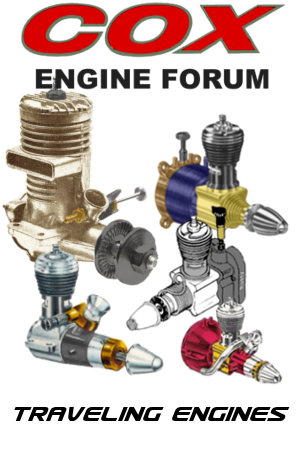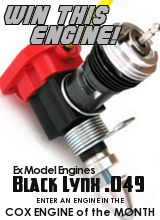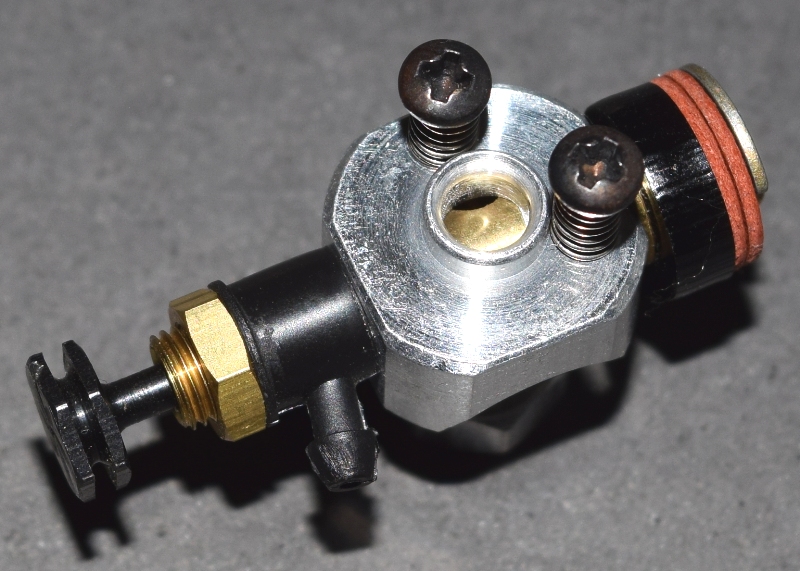Log in
Search
Latest topics
» Roddie-Rigger.. a 2005 original designby roddie Today at 2:54 am
» Golden Bee basic running problem
by roddie Yesterday at 10:51 pm
» Simple Gliders
by rdw777 Yesterday at 6:25 pm
» Foam hand kids glider converted to 0.049 CL
by rdw777 Yesterday at 6:11 pm
» Weird search for a single comic from an old Mad Magazine
by Kim Yesterday at 1:44 pm
» Scientific "Zipper" Build...Zipper Flys!.
by getback Yesterday at 7:27 am
» Cox .049 Tee Dee engines back in stock (limited availablility)
by GallopingGhostler Yesterday at 1:05 am
» Very off-topic.........Time passes and not always for the best......
by rsv1cox Thu Jul 25, 2024 2:47 pm
» Jim Walker Bonanza etc.
by rsv1cox Wed Jul 24, 2024 6:30 pm
» Throttles for Cox Tee Dee .049 / .020 / .010 engines --- videos
by sosam117 Wed Jul 24, 2024 8:54 am
» Introducing our Cox .049 TD Engines
by Admin Tue Jul 23, 2024 2:00 am
» Project Cox .049 r/c & Citabrian Champion
by getback Mon Jul 22, 2024 4:14 pm
Cox Engine of The Month
July-2024
robot797's
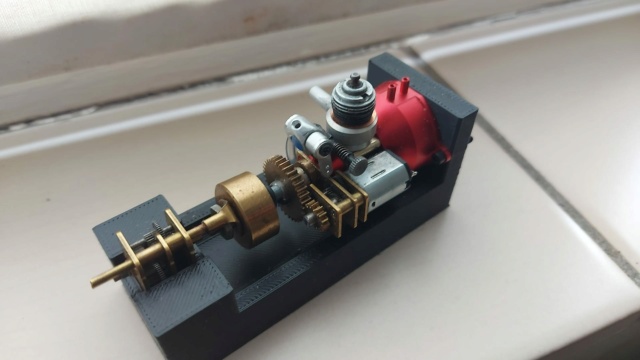
"ULTIMITE COX 010: it has a clutch, E starter, throttle, exhaust, aluminum tank, aluminum venturi, gearbox with forward and reverse, and now its on a custom drawn and printed stand"

PAST WINNERS
robot797's

"ULTIMITE COX 010: it has a clutch, E starter, throttle, exhaust, aluminum tank, aluminum venturi, gearbox with forward and reverse, and now its on a custom drawn and printed stand"

PAST WINNERS
RC Carburetor for Cox Pee Wee .020 / .049 / Tee Dee .010 - .020 - .049/.050/.051
Page 2 of 2
Page 2 of 2 •  1, 2
1, 2
 Re: RC Carburetor for Cox Pee Wee .020 / .049 / Tee Dee .010 - .020 - .049/.050/.051
Re: RC Carburetor for Cox Pee Wee .020 / .049 / Tee Dee .010 - .020 - .049/.050/.051
A combination that you can also try is to use a regulation ring with a carburetor, in this case there is no fuel tank pressurization and the engine responds efficiently.
This idea was taken from the friend and member of CEF, András from Hungary
 .
.
You can watch the video and draw conclusions for the use of your engines and in what way.
This idea was taken from the friend and member of CEF, András from Hungary

 .
.You can watch the video and draw conclusions for the use of your engines and in what way.

MauricioB- Top Poster

- Posts : 3649
Join date : 2016-02-16
Age : 53
Location : ARG
 Re: RC Carburetor for Cox Pee Wee .020 / .049 / Tee Dee .010 - .020 - .049/.050/.051
Re: RC Carburetor for Cox Pee Wee .020 / .049 / Tee Dee .010 - .020 - .049/.050/.051
Great idea from Andras. Thanks Mauricio 

Levent Suberk- Diamond Member

- Posts : 2228
Join date : 2017-12-24
Location : Türkiye
 Re: RC Carburetor for Cox Pee Wee .020 / .049 / Tee Dee .010 - .020 - .049/.050/.051
Re: RC Carburetor for Cox Pee Wee .020 / .049 / Tee Dee .010 - .020 - .049/.050/.051
I think the main difference between the two carbs is the fact that the Cox one has an adjustable air bleed which will control the mixture at idle somewhat. The Japanese one as well as the reedy Cox one is really just a choke which will throttle down a bit but then be too rich at idle. I am sure an air bleed in the Japanese one or even the reedy Cox one would give a serviceable carb. It would not need to idle down to 3,000 rpm for the plane to fall out of the air. As far as the position of the needle opening to the air valve, I doubt the 1/8" difference in position would make any difference in running. Just look at the remote needles in most of the larger motors that work quite well in most cases. Of course the air bleed hole in the Japanese or reedy carb would need to be tried on a plane and tested thoroughly to make any real conclusions.MauricioB wrote:sosam117 wrote:Then what is the difference between the Cox R/C throttle and the one from Japan -- for Tee Dee engines:
This Japan R/C throttle for a Tee Dee .049/.050
And this Cox R/C throttle for the same Tee Dee .049/.050?
I'm talking about the Tee Dee engines that have front rotor intake and not the rear reed intake.
The group have been talking about the rear intake of a Cox Baby Bee, SureStart, and similar engines.
I am looking at the Tee Dee engines with this R/C throttle.
The carburetor has the fuel inlet regulation needle combined with the air inlet through the venturi at a minimum distance, that is, the venturi opening (air passage) that will suck the fuel flow is integrated and arranged at the same time fuel when venturi is opened. As there is no distance between one point and another, their interaction is immediate and that is why it is called a carburetor, because it efficiently combines the air inlet with the fuel inlet as the venturi opens or closes.
The air valve you have there delivers air to another physical distance from the spray bar, therefore not accurate enough for good throttle response or to keep the engine throttle at low revs, it can of course work but when you accelerate suddenly you won't get an immediate response and in turn when you want to run the engine at low revs the engine will become critical in gear.
If you put this motor (with air valve) in an aerobatic model, you will not have fast acceleration responses, that is, it will not accelerate instantly and the motor may be planted in some flight position.
You can do bench experiences, but then in flight and stunts things change significantly.
For both cases, if you put a carburetor or air valve, it will help a better operation to pressurize the fuel tank, this is for both cases..

aspeed- Platinum Member

- Posts : 790
Join date : 2013-01-18
Location : Leamington Ont. Can.
 Re: RC Carburetor for Cox Pee Wee .020 / .049 / Tee Dee .010 - .020 - .049/.050/.051
Re: RC Carburetor for Cox Pee Wee .020 / .049 / Tee Dee .010 - .020 - .049/.050/.051
aspeed wrote:I think the main difference between the two carbs is the fact that the Cox one has an adjustable air bleed which will control the mixture at idle somewhat. The Japanese one as well as the reedy Cox one is really just a choke which will throttle down a bit but then be too rich at idle. I am sure an air bleed in the Japanese one or even the reedy Cox one would give a serviceable carb. It would not need to idle down to 3,000 rpm for the plane to fall out of the air. As far as the position of the needle opening to the air valve, I doubt the 1/8" difference in position would make any difference in running. Just look at the remote needles in most of the larger motors that work quite well in most cases. Of course the air bleed hole in the Japanese or reedy carb would need to be tried on a plane and tested thoroughly to make any real conclusions.MauricioB wrote:sosam117 wrote:Then what is the difference between the Cox R/C throttle and the one from Japan -- for Tee Dee engines:
This Japan R/C throttle for a Tee Dee .049/.050
And this Cox R/C throttle for the same Tee Dee .049/.050?
I'm talking about the Tee Dee engines that have front rotor intake and not the rear reed intake.
The group have been talking about the rear intake of a Cox Baby Bee, SureStart, and similar engines.
I am looking at the Tee Dee engines with this R/C throttle.
The carburetor has the fuel inlet regulation needle combined with the air inlet through the venturi at a minimum distance, that is, the venturi opening (air passage) that will suck the fuel flow is integrated and arranged at the same time fuel when venturi is opened. As there is no distance between one point and another, their interaction is immediate and that is why it is called a carburetor, because it efficiently combines the air inlet with the fuel inlet as the venturi opens or closes.
The air valve you have there delivers air to another physical distance from the spray bar, therefore not accurate enough for good throttle response or to keep the engine throttle at low revs, it can of course work but when you accelerate suddenly you won't get an immediate response and in turn when you want to run the engine at low revs the engine will become critical in gear.
If you put this motor (with air valve) in an aerobatic model, you will not have fast acceleration responses, that is, it will not accelerate instantly and the motor may be planted in some flight position.
You can do bench experiences, but then in flight and stunts things change significantly.
For both cases, if you put a carburetor or air valve, it will help a better operation to pressurize the fuel tank, this is for both cases..
Friend, it has nothing to do with the needle being remote.
The fuel spout is right in the center of the venturi barrel, therefore you can place the fuel passage needle in the cockpit of the aircraft (if you prefer), while the spout will always be in the center and interacting together with the air opening.

MauricioB- Top Poster

- Posts : 3649
Join date : 2016-02-16
Age : 53
Location : ARG
 Re: RC Carburetor for Cox Pee Wee .020 / .049 / Tee Dee .010 - .020 - .049/.050/.051
Re: RC Carburetor for Cox Pee Wee .020 / .049 / Tee Dee .010 - .020 - .049/.050/.051
Either way the fuel and air is mixed between the top of the opening in the rotating barrel and the opening window in the crank for atomization. I don't think 1/8" up or down in that area would make a lot if difference in running. I have seen control line conversion carbs with the fuel inserted much above the optimal position, slightly below the smallest diameter where it is necked down. They all seem to work just as well either way. Any comments and improvements are always encouraged. I always want to know more. (and maybe go faster) I believe the atomization is only really going to happen, or really be important right at the exhaust port in the cylinder. I have used venturis with spigots, and holes in the side and spray bars all the way through with no differences in power, given the air opening size being the same.

aspeed- Platinum Member

- Posts : 790
Join date : 2013-01-18
Location : Leamington Ont. Can.
 Re: RC Carburetor for Cox Pee Wee .020 / .049 / Tee Dee .010 - .020 - .049/.050/.051
Re: RC Carburetor for Cox Pee Wee .020 / .049 / Tee Dee .010 - .020 - .049/.050/.051
aspeed wrote:Either way the fuel and air is mixed between the top of the opening in the rotating barrel and the opening window in the crank for atomization. I don't think 1/8" up or down in that area would make a lot if difference in running. I have seen control line conversion carbs with the fuel inserted much above the optimal position, slightly below the smallest diameter where it is necked down. They all seem to work just as well either way. Any comments and improvements are always encouraged. I always want to know more. (and maybe go faster) I believe the atomization is only really going to happen, or really be important right at the exhaust port in the cylinder. I have used venturis with spigots, and holes in the side and spray bars all the way through with no differences in power, given the air opening size being the same.
Okay, my videos and my essays I already did.
Make your experiences then and tell us how it went! ...


MauricioB- Top Poster

- Posts : 3649
Join date : 2016-02-16
Age : 53
Location : ARG
 Re: RC Carburetor for Cox Pee Wee .020 / .049 / Tee Dee .010 - .020 - .049/.050/.051
Re: RC Carburetor for Cox Pee Wee .020 / .049 / Tee Dee .010 - .020 - .049/.050/.051
The difference is that the Cox Tee Dee part is actually a carb and the Surestart and these Japanese versions are essentially a variable choke. A choke as we know is used to enrich the mixture for starting in the normal use. We probably have also forgotten to open the choke once or twice on a chainsaw or weedeater(whippersnipper, string trimmer, lol) and realized the lack of power. Sometimes it all adds up and something like the Surestart throttle works, othertime not so much.
It's not about 1/8" here or there, it's about how the air flow and pressures interact to meter fuel. SPI adds a certain amount of complication, in that at high speed there is a short time for it to allow air into the case, while throttled back, there is more time and lower pressure in the case means more air is pushed in.
It's not about 1/8" here or there, it's about how the air flow and pressures interact to meter fuel. SPI adds a certain amount of complication, in that at high speed there is a short time for it to allow air into the case, while throttled back, there is more time and lower pressure in the case means more air is pushed in.

gkamysz- Gold Member

- Posts : 390
Join date : 2018-02-22
Location : Chicagoland
Page 2 of 2 •  1, 2
1, 2
Page 2 of 2
Permissions in this forum:
You cannot reply to topics in this forum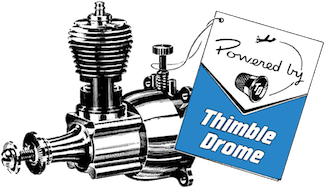
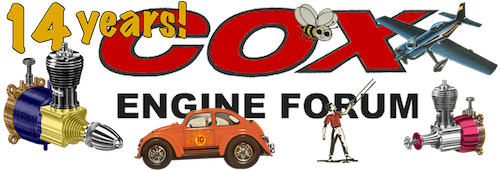
 Rules
Rules
